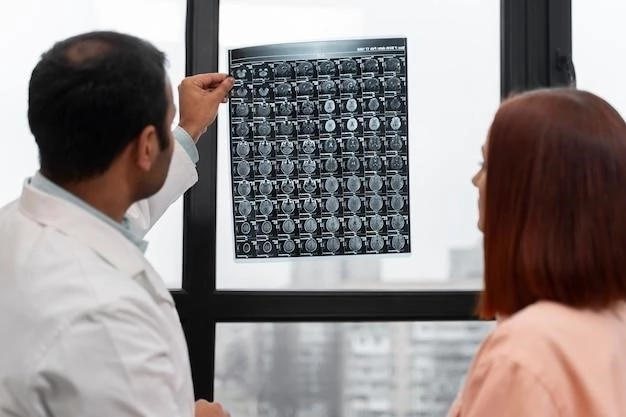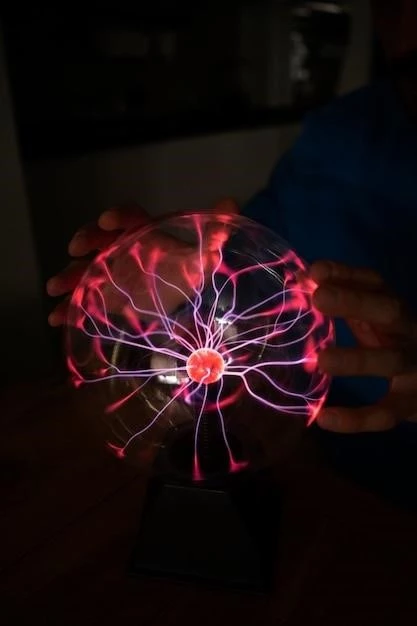Symmetrical thalamic calcifications present with distinct clinical features, often appearing at birth. Neurological signs may include hypertonia, fixed flexion contractures, and bulbar involvement. Imaging studies and clinical evaluation are crucial for diagnosis.
Description and Clinical Presentation
Symmetrical thalamic calcifications usually manifest at birth with distinctive clinical features, including hypertonia, fixed flexion contractures, and bulbar involvement. A low Apgar score, spasticity, weak cry, poor feeding, and facial weakness may also be present. Neuroimaging studies play a critical role in diagnosing this condition, which is characterized by bilateral symmetrical thalamic gliosis. Management requires a comprehensive evaluation to determine the underlying cause and appropriate treatment plan.
Diagnostic Approaches and Teams
Diagnostic teams for Symmetrical Thalamic Calcifications may include neurology specialists and other healthcare professionals for a comprehensive evaluation and accurate diagnosis.
Neuroimaging and Clinical Assessment
Neuroimaging plays a crucial role in the assessment of symmetrical thalamic calcifications. Imaging modalities such as CT scans can reveal bilateral symmetrical thalamic calcifications, providing valuable insights for the clinical evaluation and diagnostic process. Clinical assessment involves a comprehensive examination of symptoms and signs to confirm the presence of this rare condition. Collaboration between neuroimaging specialists and clinicians is essential for accurate diagnosis and appropriate management.
Associated Conditions and Differential Diagnosis
Understanding associated conditions and differential diagnosis is crucial in managing symmetrical thalamic calcifications effectively. Seek specialized medical teams for accurate assessments.
Basal Ganglia and Thalamus Involvement
The basal ganglia and thalamus are integral parts of the brain that can be affected by various diseases. Understanding the involvement of these structures in symmetrical thalamic calcifications is crucial for accurate diagnosis and treatment. Collaboration between specialists in neurology, radiology, and pathology is essential to assess the extent of basal ganglia and thalamus involvement and determine the appropriate management plan for patients with this rare condition.
Treatment and Prognosis
Management of symmetrical thalamic calcifications involves a multidisciplinary approach, considering the complex neurological manifestations. Seek expert guidance for tailored treatment plans and long-term prognosis.
Management and Long-Term Outcomes
Managing symmetrical thalamic calcifications involves a collaborative effort between healthcare providers to develop tailored treatment plans addressing the condition’s complex nature. Long-term outcomes vary, highlighting the importance of continuous monitoring and support for patients and their families. Stay informed about advancements in treatment to ensure the best possible prognosis for individuals affected by this rare condition.

Research and Case Studies
Stay informed about the latest research and case studies on symmetrical thalamic calcifications to enhance understanding and treatment outcomes. Seek insights from published literature and ongoing investigations.
Advancements in Understanding
Recent studies have shed light on the clinical manifestations and neuropathological characteristics of symmetrical thalamic calcifications, enhancing our understanding of this rare condition. Ongoing research aims to elucidate the underlying mechanisms and identify potential treatment targets. Stay informed about the latest advancements to contribute to the evolving knowledge in the field of symmetrical thalamic calcifications.

Support Resources and Future Directions
Explore available support resources and stay updated on future directions in understanding and managing symmetrical thalamic calcifications for better patient care and outcomes.
Patient Resources and Collaborative Initiatives
Access patient resources and engage in collaborative initiatives to enhance support and knowledge-sharing among individuals affected by symmetrical thalamic calcifications. Stay connected with healthcare providers and patient communities for comprehensive care and progress in understanding this rare condition.
